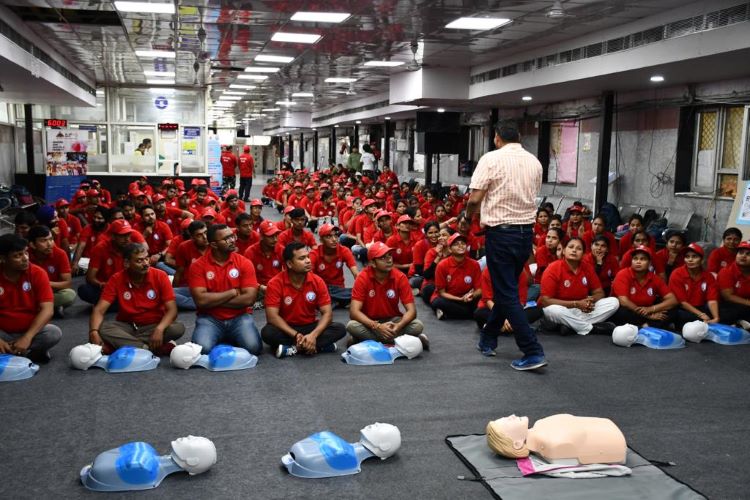Heart Care Foundation & DDMA (East) join hands to empower people with CPR skills

Team L&M
In association with the District Disaster Management Authority (East), the Heart Care Foundation of India (HCFI) has launched an awareness and training program on Hands-Only CPR. CPR is Cardio-Pulmonary Resuscitation.
“India is witnessing a concerning uptick in cardiac arrest cases, underscoring the pressing need for widespread CPR training. Immediate application of Hands-Only CPR can be the thin line between life and death,” says Anil Banka, DM (East), adding that the mission of this program is to enable every citizen to potentially be a lifesaver. “We have collaborated with schools, colleges, NYKs, and Civil Defence Volunteers, and aim to reach a broad audience. We want to train around 20,000 individuals by December 2023,” he adds.
Says Dr Veena Aggarwal, Trustee, Heart Care Foundation of India & CMD IJCP Group and Medtalks. “As we emotionally remember Dr KK’s immense contributions to healthcare, it’s imperative we also continue his legacy of community welfare. The simplicity of Hands-Only CPR belies its life-saving potential, especially crucial in those first ten minutes following cardiac arrest. Through our partnership with DDMA (East), we aspire to permeate every part of East Delhi with this vital knowledge. I urge everyone to champion this cause, ensuring we together save numerous lives.”
“With contemporary lifestyle pressures, the rise in sudden cardiac arrests, especially among urban dwellers and the younger populace, is alarming. While prevention and lifestyle adaptations are essential, it’s pivotal for everyone to realise that death can be reversed within 10 minutes of a cardiac arrest. This underscores the importance of the Hands-Only CPR 10 technique. Our HCFI mantra succinctly encapsulates this: Within 10 minutes of death, for at least 10 minutes (25 for adults and 35 for children), one must consistently and effectively compress the deceased’s chest at a speed of 10×10=100 compressions per minute,” she adds.
A sudden cardiac arrest occurs when the electrical conducting system of the heart fails and the heartbeats irregularly and very fast (more than 1000 times, technically called as ventricular fibrillation). Soon after the heart suddenly stops beating and the blood flow to the brain stops. As a result, the person becomes unconscious and stops normal breathing. A cardiac arrest is not the same as a heart attack, but it may be caused by a heart attack. In most cases, sudden cardiac arrest may be reversible in the first 10 minutes. This is possible because the brain remains alive during this period when the heart and respiration have stopped, a situation called clinical death.
Continuous compression only CPR compresses the heart between the sternum and the backbone and builds up the pressure that keeps the oxygenated blood flowing to the brain and keeps the person alive until a defibrillator becomes available or expert medical help arrives. It is important to act quickly for every minute lost reduces the chances of revival by 10%. So, if you wait 5 minutes, the chances of surviving are 50 per cent less.

